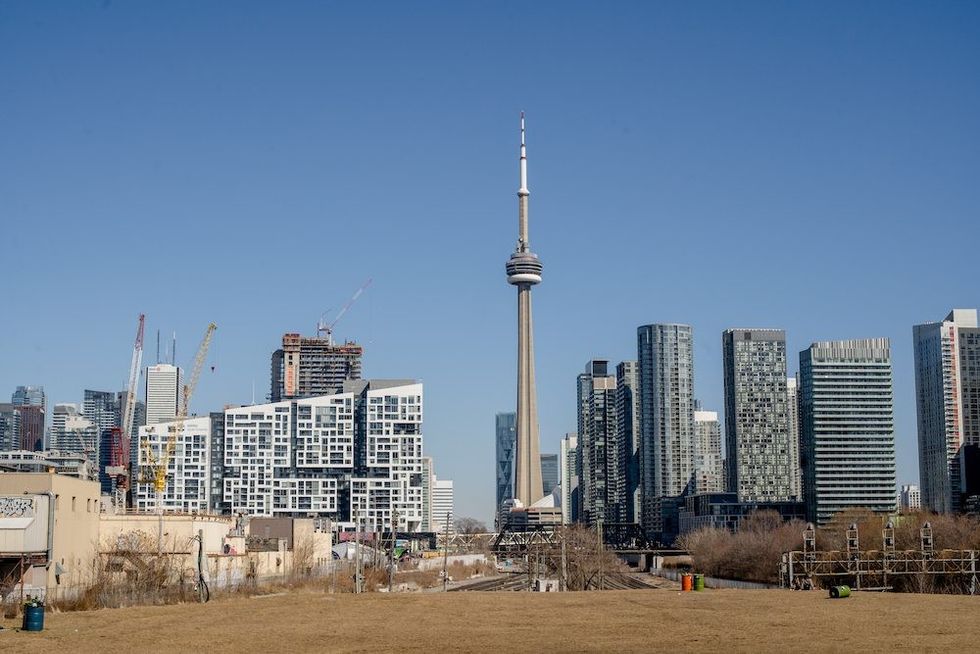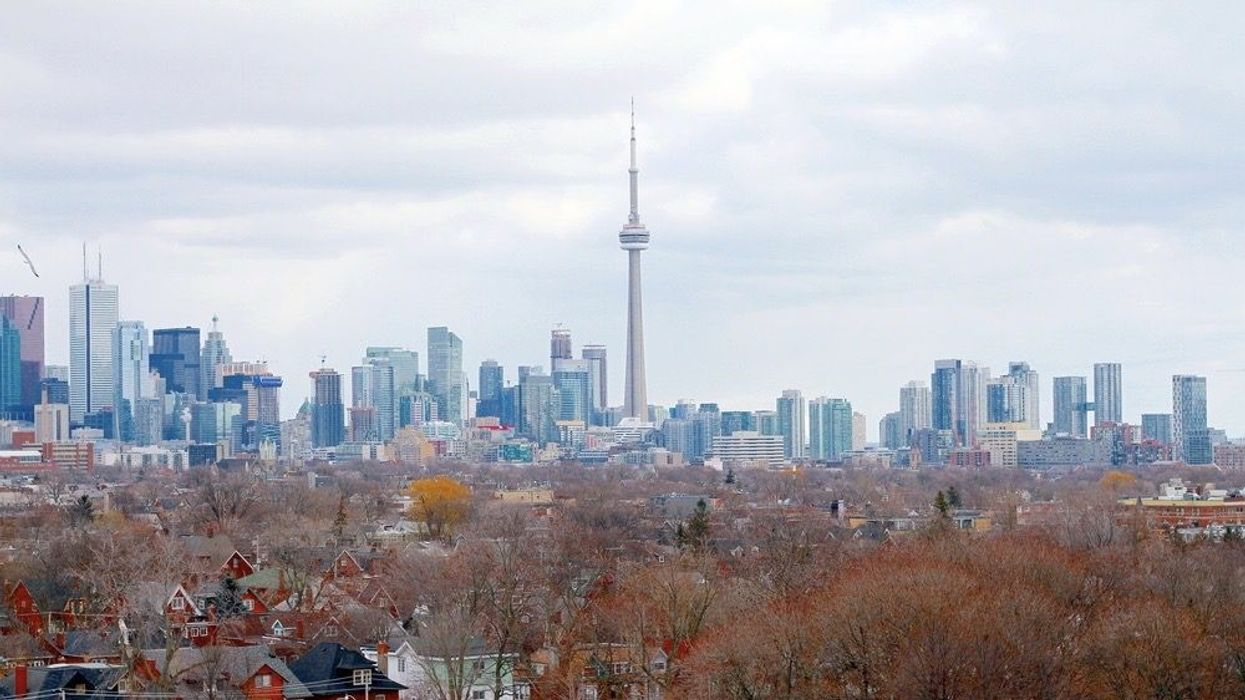Councillor Stephen Holyday (Etobicoke Centre) calls the City of Toronto’s new housing plan a “radical” one that will modify planning that’s been in place for decades.
“I think people need to understand what’s coming,” says Holyday. “Because the assumptions that they have about their neighbourhood’s very character and the way they function is going to change. It may not be on day number two, but there will be some very fundamental changes within the borders of the City of Toronto over time.”
The problem is, Toronto needs to meet or exceed the provincial target of building 285,000 new homes over the next 10 years. That’s the point driven home by Toronto Mayor John Tory and the City’s Housing and Planning Committee Chair, Councillor Brad Bradford (Beaches—East York) in their “ambitious” 2023 Housing Action Plan on Friday. In a motion that will go live before City Council tomorrow, Mayor Tory directs the City Manager to develop the game-changing plan. At front and centre are zoning changes and incentives to increase density in neighbourhoods.
Tory calls for revisiting plans in Toronto’s Port Lands, waterfront, and other major projects to reassess whether potential for housing density is optimised. He also calls for the creation of a post-secondary strategy to increase student housing. Perhaps most controversially, he outlines plans for the legalization and regulation of multi-tenant houses throughout the city, in neighbourhoods historically zoned for single-family homes.
This includes Holyday’s beloved Etobicoke Centre, a suburban part of the city in the heart of Etobicoke. “I could compare the community here to many of the local communities that were built in the 1950s and 60s,” says Holyday. “A lot of these cities have a similar look and feel, though we’re all a little unique and in different neighbourhoods in the city. And I’m a product of the environment that I’ve been privileged to represent. It is very much who I am, how I grew up, and where I chose to live and raise a family. And I’ve encountered many people who have the same story.”
And his neighbours don’t want it to change, thank you very much. Holyday says his long-time Etobicoke counterparts are drawn to many attractive attributes of the city: the ample open spaces, parks, and a certain type of housing stock -- specifically, detached homes. “It’s a sought-after place to live, which is one of the reasons we see housing so expensive and so competitive; people are competing to stay inside the city,” says Holyday.
Unlike Holyday, many think the new housing plan is a positive -- and even overdue -- move. Not surprisingly, it didn’t take long for the Residential Construction Council of Ontario (RESCON) to issue a press release voicing its support for the plan -- and the inevitable widespread construction it will facilitate.

“RESCON applauds without reservation Toronto Mayor John Tory and Planning and Housing Committee Chair Councillor Brad Bradford as they advance meaningful and measurable solutions to the city’s housing affordability and supply crisis with their 2023 Housing Action Plan,” said RESCON president Richard Lyall. “The commitment to meet or exceed provincial housing targets as a result of Toronto’s new Housing Action Plan is a once-in-a-generation change to housing policy that RESCON fully supports, endorses and will assist the city in every way possible to deliver upon.”
RESCON expressed its support for Tory’s commitment to change zoning policies to prioritize housing construction, increase zoning permissions on major streets, create transition zones between commercial and potential residential areas, expand permissions for multiplexes and additional housing forms, and remove exclusionary zoning restrictions.
RESCON calls the implementation of a regulatory framework for multi-tenant housing “an unprecedented step forward” to address serious and prevailing equity issues for many vulnerable residents of the city, including students who have been forced to reside in unacceptable conditions due to the housing crisis.
“The scale of the changes proposed by the 2023 Housing Action Plan are so extensive that they are precisely the character of initiatives that RESCON has been calling for in order to address the housing affordability and supply crisis,” said Lyall.
The 2023 Housing Action Plan also includes what RESCON calls “meaningful and necessary” public accountability tools to track outcomes and goals. “The mayor’s commitments to outcome management, transparency and in particular the delivery of a multi-tenant housing regulatory and enforcement framework are a massive step forward in protecting so many of our most vulnerable residents,” Lyall stated.
Housing advocacy group More Neighbours Toronto says that the plan released by the City has been strong. “Obviously, the details still need to be wormed out as to how impactful it will be to result in exactly what planning staff recommend,” Rocky Petkov, a volunteer and advocate at More Neighbours Toronto told STOREYS. “Still, it’s a plan that recognizes the myriad of ways that city policy stifles the construction of new housing and seeks to remedy that. What we like most is how, with this proposal, the language used by the city has changed from one where development is seen as a something of a necessary evil and that city policy is trying to reduce harms, to one where development is seen as a net positive, and the question is how to support it in such a way that it aligns with other city objectives."
More Neighbours Toronto is also pleased that Mayor Tory is making good on his promise surrounding rooming houses. “We all thought that it would be silently dropped when it didn't have the votes in the fall but, here we are,” says Petkov. “The first real city council meeting and draft regulations are before us. Sadly, the 2024 timeline could be a lot sooner, but it’s good to see this type of affordable housing is not being forgotten.”
Petkov says that allowing multiplexes in neighbourhoods typically zoned for single-family homes is a smart idea because it will allow our city to grow in a much more natural way.
“The status quo is one where all development in the city has been hyper concentrated into just a few areas and we can't pretend this has been without issue,” says Petkov. “For example, when I lived in CityPlace, it was not until late 2020 -- some 10+ years after the neighbourhood really began to grow -- that a school and community centre was opened. Meanwhile, in other parts of the city you have had schools closing because there just aren't enough kids to sustain the neighbourhood school -- not many families can afford a $1.5M home."

However, the plan isn’t perfect, says More Neighbours Toronto volunteer Talia Pankewycz. "It's great that [the plan] moves to legalize rooming houses, but without addressing emergency or transition housing, it still falls short for our most vulnerable neighbours,” says Pankewycz. “In short, this is a housing plan that does not address the very real very pressing needs of the unhoused."
Holyday says there’s two pieces in the Mayor’s letter that are particularly important. “They’re small words, but they’re big,” says Holyday. “First, it talks about exceeding the provincial targets. The provincial targets are 115% of what the growth was already envisioned to be.... The target is 285,000 [new homes] in the City of Toronto in the next 10 years.... The words from the Mayor ‘to meet or exceed that,’ is something that would worry a lot of people. With the types of concerns we hear about in city politics -- road congestion, difficulty enrolling in schools and community programs -- there’s a lot of worry about infrastructure and who’s going to pay for it all.”
The second area of concern with the plan, says Holyday, are the words “equitable distribution of development,” something that he says targets the suburbs, where we’ve seen more modest rates of growth. “That’s an interesting approach to planning, because planning had always been about logical overlays on maps and structures and this is bringing deeper public policy, and maybe even philosophical viewpoints, into how you distribute development in the city,” says Holyday.
Holyday says suburban residents should be paying attention, however, he fears few are. “Instead of downtown in growth centres and nodes, this plan seeks to throttling development in places that had seen less," he says. "That will concern people when they start to feel the impacts of it."
To take it down to the micro level, increasing the number of units on a property that’s traditionally housing single-family homes with multiplexes may not actually solve the problem as intended, according to Holyday.
“One should look at what the adoption rate was for basement apartments -- it’s not huge in the city,” says Holyday. “We always had the rights and permission to increase density; people never took it. So, this looks to throttle it. You have to look at who you’d think would buy these properties and create multiple dwellings in one place; and I would theorize that it’s not going to be your typical resident -- it may be more along the lines of investors or business. And that will drastically change the character of the neighbourhoods.”
He says that increasing density will result in the major changes to the local vicinity over time and stress local infrastructure. “There’s a lot of local pride in Etobicoke Centre; people care a lot,” says Holyday. “They care about the appearance, they care about the upkeep, they care about peace and being neighbourly. The worry is that, if you increase density, you start to stress those things. You start to move away from the owner-occupier model to something else.”
One of the things that Holyday precast will manifest into more human-to-human conflict involves parking. “One of the things that’s defined the neighbourhood -- because they were part of the vision of the people who planned these post-war, detached home communities -- is that a lot of the parking took place on the property, in a garage or in a driveway," says Holyday. "This kept the streets free and clear of cars. These are wide, tree-lined streets. If you bring multiple units onto a site that really only has parking for one or two units, cars will begin to spill over into the streets. The roads weren’t designed for that -- many don’t even have a sidewalk.”
Holyday says that he already gets calls about people taking advantage of the street. “They tell you stories about how people aren’t going to require parking on these streets because they’re not going to own a vehicle,” says Holyday. “I don’t think that’s realistic in the suburbs where things are still spaced apart and where people still travel a ways to get to work and school.”
So, what’s the solution? The city needs more homes, whether we like it or not. And some may argue that there's no room for NIMBYism in our affordable housing crisis that's characterized by an unwavering lack of supply.
“We have to be clear about a reasonable rate of growth within the city that matches our ability to grow the infrastructure and doesn’t stress the population,” says Holyday. “It involves a healthy rate of growth that ensures that neighbourhoods are appealing to people and continue to be. There are plans in place to concentrate growth in nodes that are well-served by transit. But, beyond that, we need to look at our philosophical views as to whether we’re socializing housing and embracing a concept of ‘equitable distribution to density,’ or do you have a different approach to growth. Perhaps some of the growth has to occur outside of the borders of the 416 or even the GTA because there’s other cities that could use population growth to grow their economy.”
Holyday highlights how much of the current discussion has been centred on the creation of rental opportunities, as opposed to home ownership ones. “There’s nothing wrong with that; rental is an important type of housing that supports a lot of people,” says Holyday. “But I question whether there’s a subtle move away from the idea that one can accumulate wealth and retirement savings in a major investment like real estate. I question some of the political motivations of my colleagues who may have different philosophical views on those concepts. It may sound extreme, but it’s something to think about.”





















